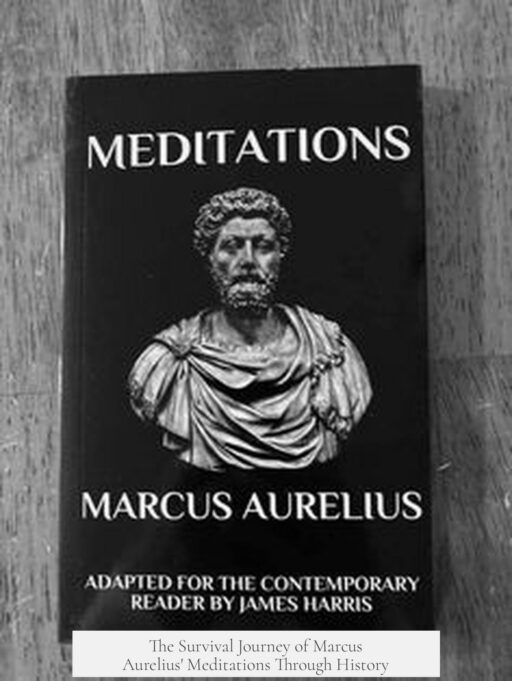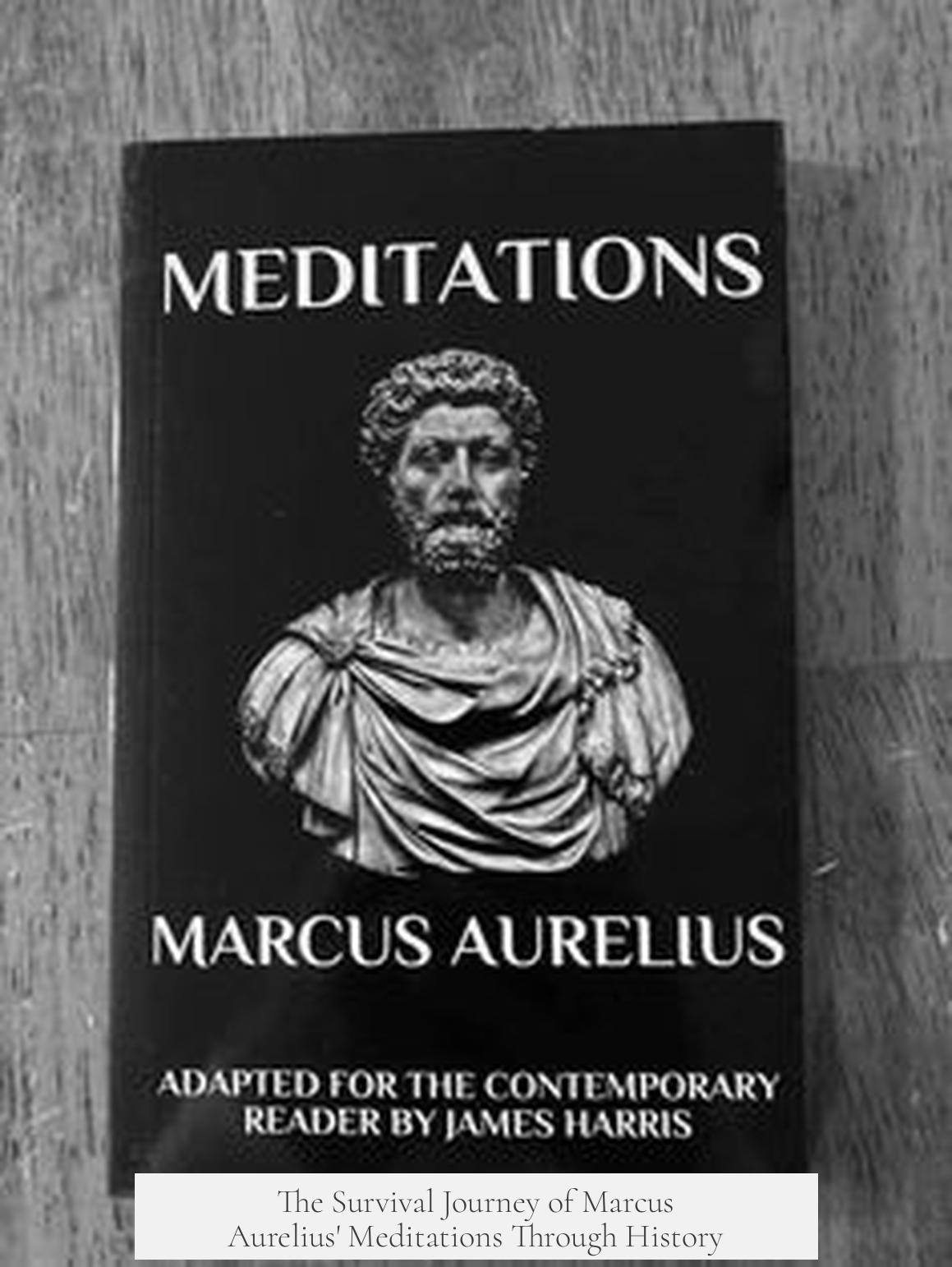The Meditations by Marcus Aurelius survive through continuous preservation, copying, and cultural remembrance that spans from their composition around 180 AD to modern times. The text endures primarily because it remained accessible and relatively well-known in the Byzantine Empire, especially from the 9th century onward, and was continuously copied and referenced by scholars who valued Marcus Aurelius’s Stoic philosophy.
After Marcus Aurelius wrote the Meditations about 180 AD, the exact details of how the manuscripts were preserved until roughly 900 AD remain unknown. Scholars agree that the work was not obscure or rare in the Eastern Roman (Byzantine) Empire. The Meditations were likely held in several manuscript copies by that time, ensuring the text was not lost despite the absence of clear documentation on its custodians.
A pivotal figure in the preservation and dissemination of the Meditations is Arethas of Caesarea, a Byzantine scholar from around 900 AD. Arethas discovered a manuscript of the Meditations, copied it diligently, and expressed admiration for it in his writings. Importantly, Arethas never claimed to have “discovered” the text; he merely worked to preserve and propagate an already known manuscript. His copy stands as the foundation for modern scholarship and the survival of the Meditations in a form accessible to later generations.
Arethas’s strong support helped establish the text within Byzantine intellectual circles. Scholars credit him with the first clear and dateable authorship mention of the Meditations, seen in a letter written to Bishop Demetrius of Eraclea around 907 AD. Arethas also provided the work’s surviving title, Τὰ εἰς ἑαυτόν (“Thoughts to Himself”), through references in his commentary.
The Byzantine Empire played a crucial role in preserving Marcus Aurelius’s legacy. Throughout the Middle Ages, the Meditations remained part of Byzantine popular culture. The Suda, a 10th-century Byzantine encyclopedia, references Marcus Aurelius and his Meditations directly, describing them as a record of his conduct in twelve books. The Suda also preserves numerous quoted passages, showing frequent use and respect for the text. This widespread acknowledgment by Byzantine scholars and emperors, including Constantine VII Porphyrogennitos and Romanos III Argyros, shows cultural reverence that sustained interest in the Meditations for centuries.
The Suda’s mentions, emerging shortly after Arethas’s time, are the earliest direct quotations we have. This contrasts with Arethas himself, who paraphrased rather than quoting directly. These textual citations helped maintain the integrity and transmission of Marcus Aurelius’ philosophical insights through Byzantine literary culture.
Beyond the Byzantine world, the Meditations slowly gained exposure in Western Europe by the late Middle Ages. By approximately 1300 AD, fragments appeared in the West, and the oldest surviving manuscript today is housed in the Vatican Library. The first Western quotation of the Meditations occurs in 1517 by Johann Reuchlin, a German scholar, in his work On the Art of the Kabbalah. This Western resurgence signals the gradual rediscovery and reintegration of Marcus Aurelius’s thought into the broader European Renaissance intellectual environment.
Additional evidence of the Meditations’ survival is found in the Palatine Anthology, a 10th-century Byzantine collection of Greek poems. One poem, believed to reference the Meditations, praises a “blessed book” offering wisdom on overcoming sorrow. While its authorship is debated—possibly written by Arethas or an earlier Byzantine scholar Theophylact Simocatta around 600 AD—its existence supports that the work or its ideas circulated widely within Byzantine culture well before the 10th century.
| Period | Key Events in Preservation |
|---|---|
| 180–900 AD | Unknown custodians preserved multiple manuscripts; text remained known in Byzantine Empire |
| c. 900 AD | Arethas discovers, copies, promotes the Meditations; provides earliest dated mention and title |
| 10th Century | Byzantine Suda encyclopedia quotes and references Meditations extensively; cultural reverence by emperors |
| c. 1300 AD | Fragments in Western Europe emerge; earliest surviving manuscript to present day |
| 1517 AD | Johann Reuchlin quotes Meditations in Western scholarship, integrating it into Renaissance thought |
- The Meditations survived largely due to Byzantine preservation practices.
- Arethas of Caesarea is central in copying and promoting the text around 900 AD.
- The Byzantine Suda encyclopedia provides direct quotations and cultural recognition.
- Fragments reach Western Europe by 1300, facilitating Renaissance rediscovery.
- References in Byzantine poetry suggest earlier textual circulation possibly by 600 AD.
How Did Meditations by Marcus Aurelius Survive Through the Ages?
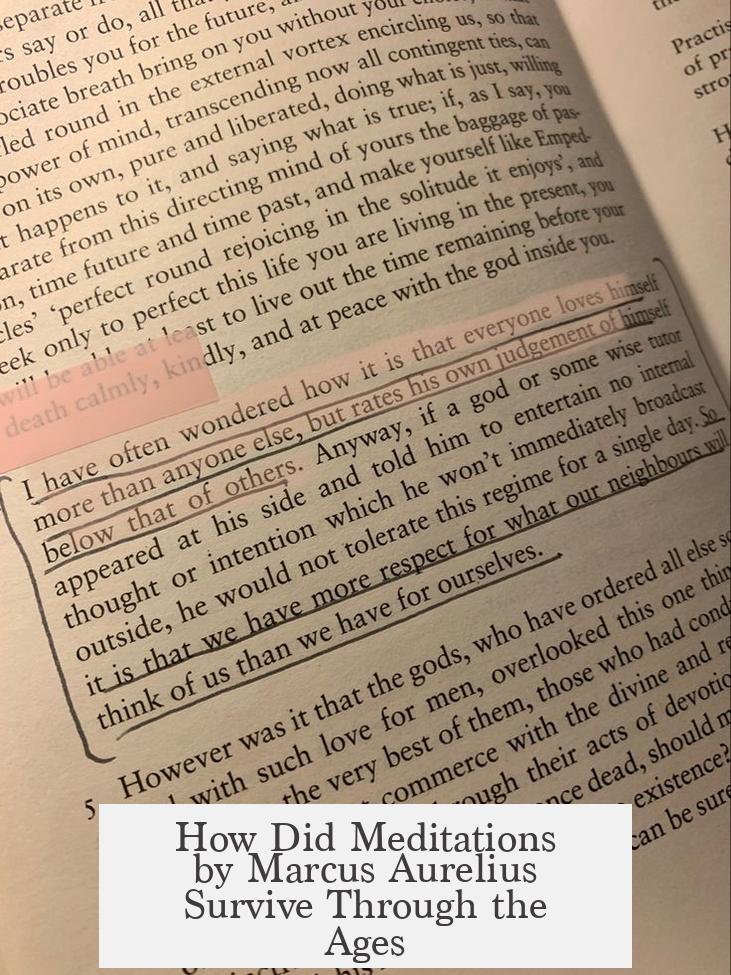
Meditations by Marcus Aurelius survived thanks to the efforts of Byzantine scholars, the preservation culture of the Eastern Roman Empire, and fortunate manuscript transmission over centuries. But that’s just the headline. The real tale involves mystery, scholarly love, and imperial influence.
Let’s unravel this fascinating journey of a personal philosophical diary that nearly vanished into history yet remains a powerful guide even today.
The Mysterious Survival from 180 AD to 900 AD
Marcus Aurelius wrote Meditations approximately in 180 AD as private reflections. What happens next isn’t very clear. The manuscript survived in some form for at least 700 years—and no one knows exactly who saved it during this long stretch.
Surprisingly, sources tell us it wasn’t some rare or secret treasure tucked away. Instead, this work was probably not uncommon in the Byzantine Empire, also known as the Eastern Roman Empire. The fact that it was “relatively well-known” suggests copies circulated among scholars or monastic libraries.
But even with this knowledge, the exact custodians remain lost in the shadows of history. No diaries, letters, or notes identify them by name.
Enter Arethas of Caesarea: The Manuscript’s Renaissance Man (900 AD)
Fast forward to around 900 AD. Here we meet a Byzantine scholar named Arethas of Caesarea. He stumbled across a manuscript of Meditations, and guess what? He fell head over heels for it.
Now, was he the discoverer of the text? Not quite. Arethas’s own writings suggest he simply copied an existing manuscript to preserve it better. So, the Meditations had been “already at large” before Arethas’s involvement.
His contributions are nonetheless huge. By systematically copying and promoting the work, Arethas brought it into public discourse in the Byzantine scholarly world. His letter to the bishop Demetrius of Eraclea, dated around 907 AD, provides the first known clear mention of the work with its recognized authorship.
Arethas also gave Meditations the title by which it is known today: Τὰ εἰς ἑαυτόν (meaning “thoughts/writings intended for himself”). We owe this title and much of the scholarly attention to him.
The Byzantine Empire: Guardians of the Meditations
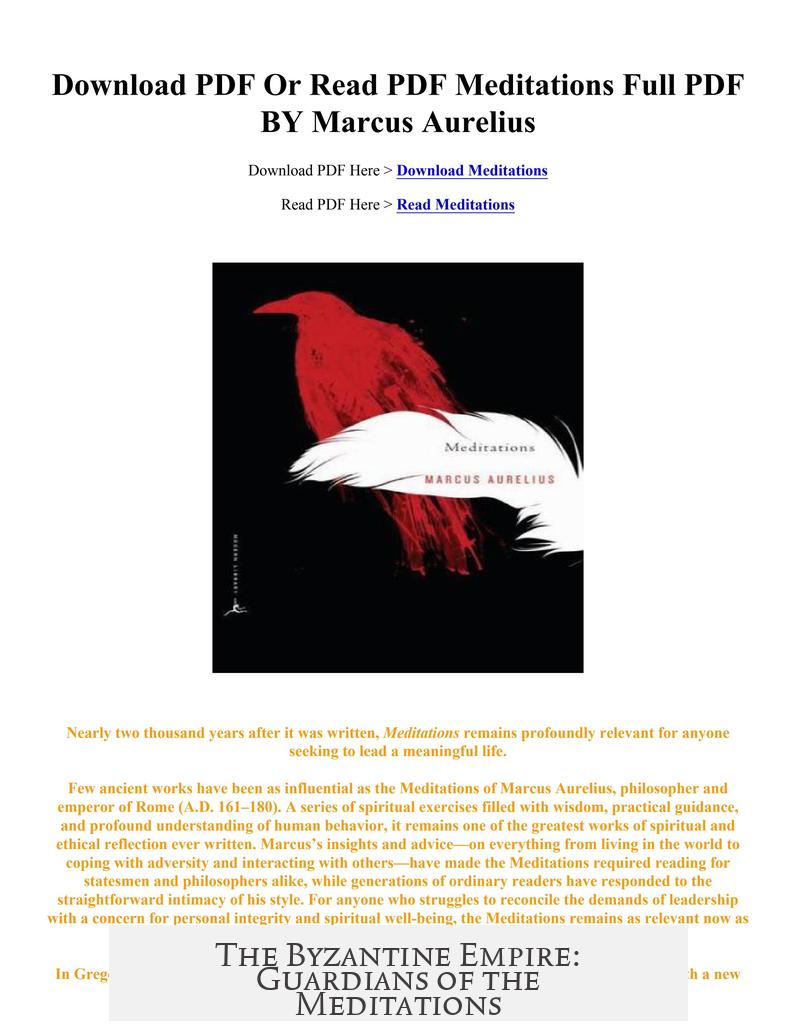
The Byzantine state didn’t treat these writings like a dusty old relic. Instead, Meditations thrived in the Eastern Roman Empire’s cultural and intellectual life for centuries.
The Suda—a 10th-century Byzantine encyclopedia—informs us in its entry on Marcus Aurelius that he “recorded the conduct of his own life in 12 books,” directly referencing his Meditations.
Even cooler? The Suda quotes the Meditations 26 times, reflecting strong familiarity and respect for Marcus’s work. Other Byzantine sources reinforced this knowledge, mentioning Marcus and his philosophy across different eras.
- Some emperors, like Constantine VII Porphyrogennitos and Romanos III Argyros, even tried to emulate Marcus’s stoic virtues.
So, this wasn’t just preserved text; it was a living philosophical heritage shaping rulers and thinkers.
Suda’s Role: Concrete Quotes and Widespread Knowledge (c. 990 AD)
After Arethas popularized Meditations, the Suda played a crucial role. It’s our first source containing actual direct quotes—not paraphrases—from Marcus’s work.
This tells us the text was not simply preserved in dusty archives but actively read, quoted, and integrated into Byzantine intellectuals’ knowledge banks by the late 10th century.
The Palatine Anthology: A Possible 7th-Century Nod to Meditations?
Another fascinating piece of evidence comes from the Palatine Anthology, a collection of Greek poems largely assembled around the 900s AD. Book 15 includes a poem titled “On the Book of Marcus.”
The poem praises a “blessed book” loaded with advice about life’s nature—smoke-like joy and pain—a central theme of Meditations.
Experts argue this poem refers to Marcus’s Meditations. Theories even suggest it may have been penned as early as 600 AD by the Byzantine scholar Theophylact Simocatta.
If true, this could push back the earliest Byzantine knowledge of the Meditations well before Arethas, revealing a longer chain of custody in the Eastern Empire.
Western Reappearance: From Fragments to the Vatican Library (circa 1300 AD and Onwards)
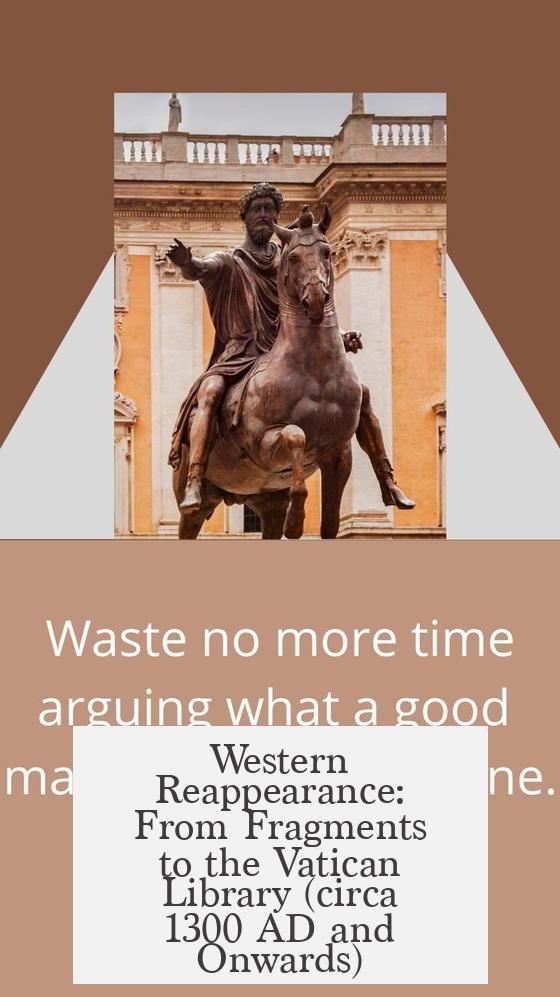
By around 1300 AD, fragments of Meditations started appearing in Western Europe.
The oldest complete manuscript we now possess is housed in the Vatican Library—a testament to the journey these writings made from East to West.
It took a few more centuries for the West to quote Meditations formally. In 1517, Johann Reuchlin, a German scholar, referenced Marcus Aurelius’s work in his book On the Art of the Kabbalah. This marked the Meditations’ emerging influence in Renaissance humanist circles.
So, What Made This Survival Possible?
The Meditations survived due to:
- Byzantine Preservation Culture: Evidence shows the Eastern Roman Empire valued the text, quoting and disseminating it extensively.
- Scholarly Passion: Arethas of Caesarea’s love for the work led to crucial copying and promotion work, helping it survive pivotal centuries.
- Indirect Influence: The cultural context of morality and philosophy in Byzantine society ensured Meditations wasn’t hidden but integrated into popular intellectual life.
- Manuscript Transmission: Copies eventually reached the West, finding homes in libraries like the Vatican’s, bridging a cultural gap.
Why Should We Care?
Meditations could’ve perished like many ancient texts. Instead, it survived through a patchy chain of stewardship spanning empires, scholars, and centuries of history.
This teaches us that preservation isn’t just about dusty libraries or scholars’ hard drives. It’s about passion, luck, cultural values, and a bit of serendipity.
Imagine if Arethas hadn’t copied that manuscript. What if Byzantine culture neglected philosophical texts like these? The world might have lost takeaway lessons on stoicism, resilience, and leadership that continue to inspire.
Practical Tips for Preserving Your Own “Meditations” Today
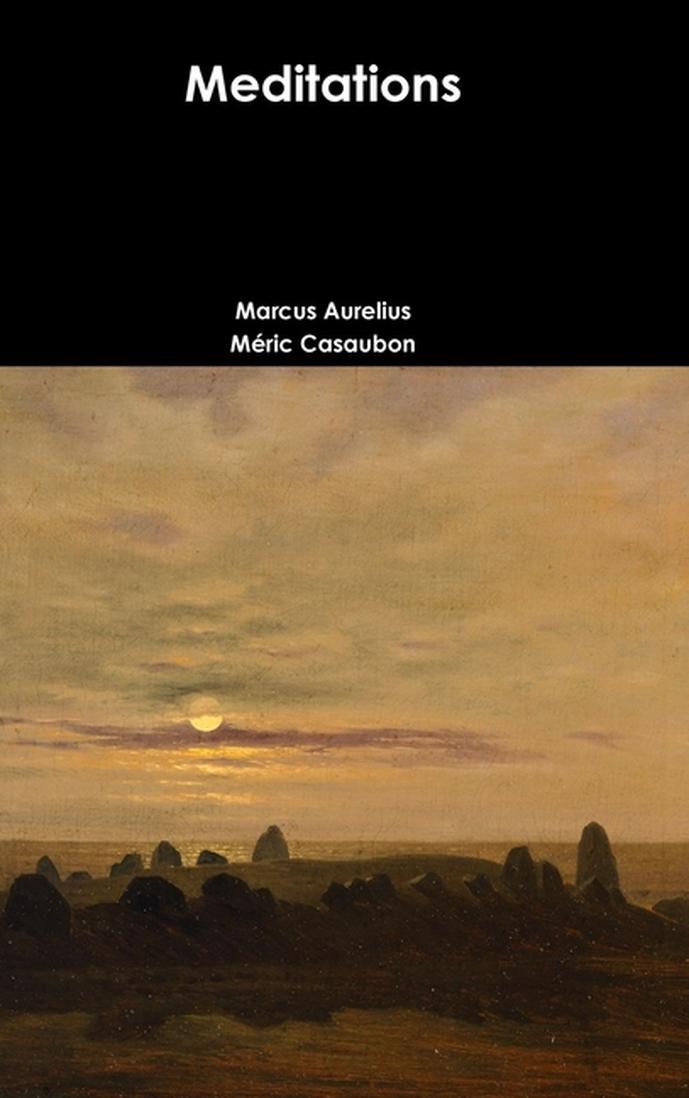
- Share Your Work: Don’t hide valuable writings—distribute copies to trusted people or communities.
- Record Properly: Keep clear titles and dates to aid future discoverers. Arethas’s naming helped historians immensely.
- Integrate Ideas into Culture: Philosophy or knowledge gains traction when people apply and cherish it in everyday life.
- Safeguard Manuscripts Digitally: Modern technology multiplies preservation options, but passion and usage remain key.
You never know which insights might endure centuries from now thanks to your efforts.
Final Thoughts
The survival of Meditations by Marcus Aurelius is a fascinating saga of Byzantine guardianship, scholarly devotion, and historical luck. It reveals how ideas can bridge thousands of years and cultures.
From the mysterious silent centuries to Arethas’s passionate copying, to Byzantine emperors quoting it, and finally the West rediscovering the text, Meditations teaches more than philosophy: it teaches resilience—in text and in life.
So, next time you read a timeless quote from Marcus Aurelius, remember the winding, shadowy path it traveled across empires, battles, and centuries to reach your hands.
